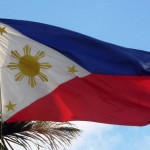 The United Nations Children’s Fund, (Unicef), World Health Organization (WHO) and the government have joined to re-establish the national immunization program by rebuilding the cold chain infrastructure which was severely damaged by Supertyphoon Yolanda in November last year, making it disaster-resilient, providing equipment that will be able to withstand future calamities.
The United Nations Children’s Fund, (Unicef), World Health Organization (WHO) and the government have joined to re-establish the national immunization program by rebuilding the cold chain infrastructure which was severely damaged by Supertyphoon Yolanda in November last year, making it disaster-resilient, providing equipment that will be able to withstand future calamities.
Unicef said that when the typhoon struck Leyte and Eastern Samar, the hardest-hit areas with Tacloban City bearing the brunt of the damage, health-care infrastructure was severely damaged including old chain equipment and vaccines.
Cold chain is a system used for keeping and distributing vaccines in a condition that retains its ability to give protection against disease.
“The cold chain consists of a series of storage and transport links, which are all designed to keep the vaccine at the correct temperature until it reaches the user, namely children and mothers in need of immunization. With most of the cold chain in the typhoon-affected areas being destroyed, more than 1.8 million affected children are at risk of disease and death,” Unicef explained.
In addition, Unicef said it will assist 450 Department of Health (DOH) facilities at different levels by providing them with earthquake- and typhoon-resistant cold chain equipment; including 5,000 temperature monitoring devices, 4,000 vaccine carriers, 800 cold boxes, 400 back-up generator systems, 150 ice-lined refrigerators, 50 solar-powered refrigerators and 200 Sure Chill freezers running on an innovative cooling technology, allowing them to operate for more than ten days without electricity.
“The needs on the ground remain great. The risk of disease outbreaks is ever present, and so far only half of affected communities have seen their health centres reopen,” Lotta Sylwander, Unicef Philippines representative, said following the symbolic hand-over to the DOH on Thursday.
Sixteen walk-in cold rooms for vaccine storage will also be built at the regional and provincial levels, supported by 3 million doses of measles-rubella and oral polio vaccines. Based on in-depth assessment of short-term requirements for routine immunization in affected regions, the equipment donation is budgeted at $8 million.
Likewise, WHO and Unicef trained health workers to improve vaccine and cold chain management.
Still in the pipeline from WHO are 66 ice pack freezers, 4,500 safety boxes, 88 cold boxes, 300 vaccine carriers, measles-rubella test kits and laboratory equipment temperature monitoring devices.
A second delivery of vital hospital equipment requested by the infectious disease referral center, the San Lazaro Hospital in Manila is soon to follow the donation given in January. As the lead agency in the Tacloban health cluster, WHO oversees the disease monitoring activities in the province to ensure prompt response to any brewing disease outbreak.
Unicef and WHO will focus on supporting the DOH in building capacity for primary health care for community health workers, and establish a mechanism for quick surge in local health capacity in future emergencies and support local units of the DOH to strengthen emergency preparedness, response and recovery capacity.
WHO Representative in the Philippines Julie Hall said the importance of building back better when ensuring that health infrastructure, which includes services, facilities, and equipment for the most vulnerable populations is present, as this is an essential step in guaranteeing healthy and capable communities.
Source: Business Mirror

















